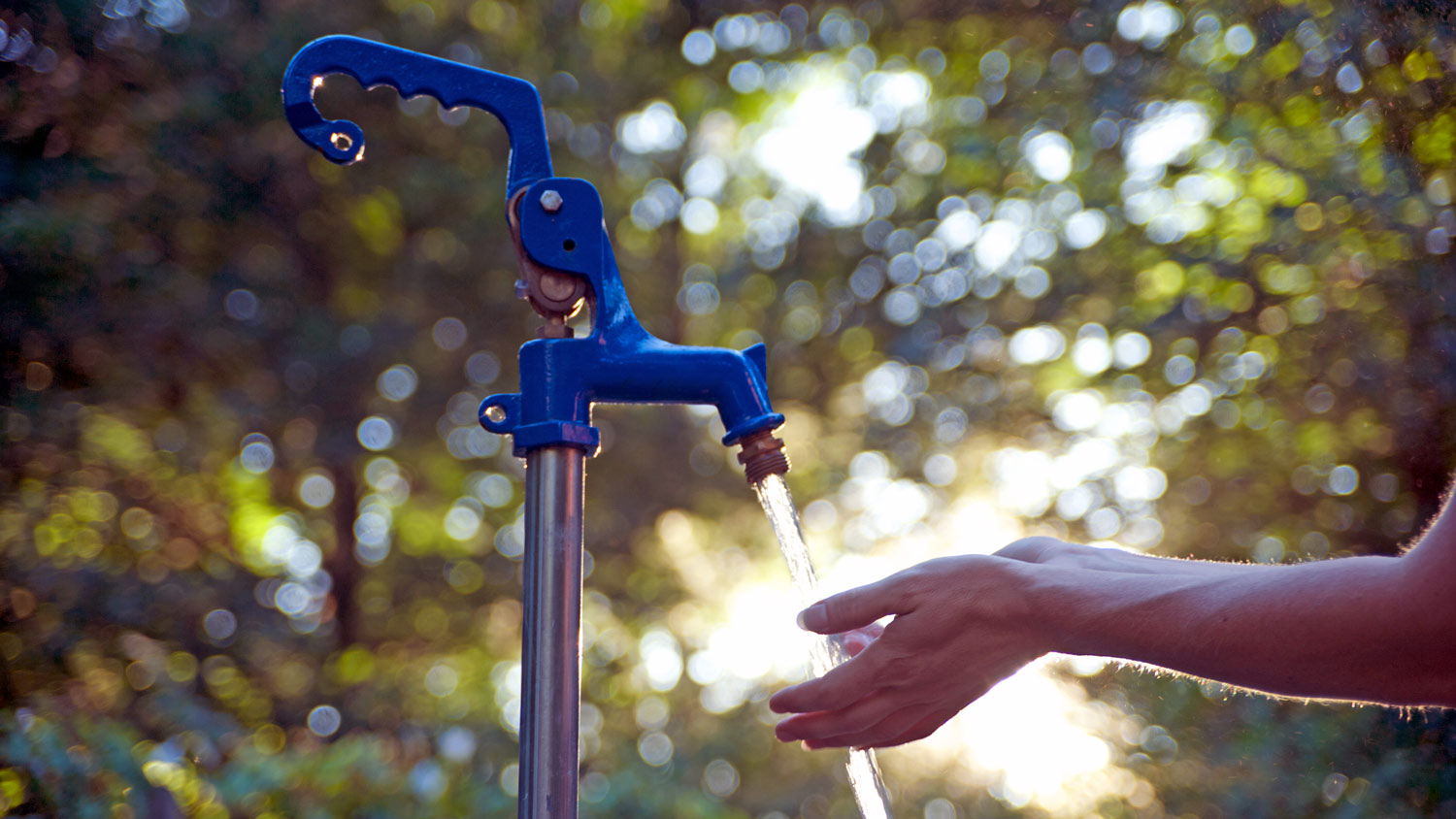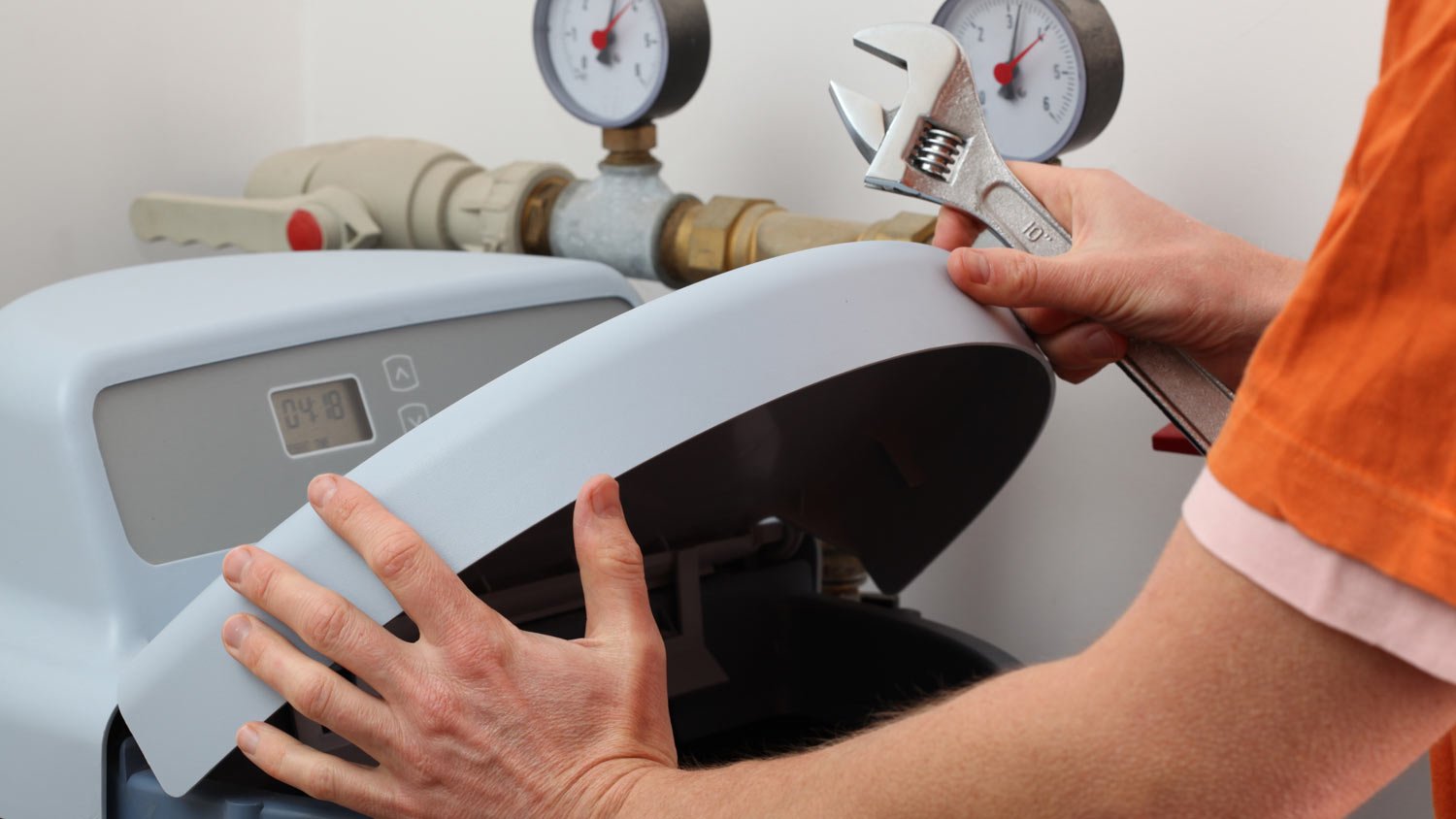
Discover how much well water treatment systems cost, including installation, maintenance, and tips to save. Get expert insights to plan your water system project.
Drain away your confusion and stop the problem at the source


A stuck valve is a top cause of a constantly running water softener.
Electrical problems, including an unplugged unit, can lead to a constant drain cycle.
Your unit may be too small. An average home needs a unit rated for 32,000 GR.
Water softener repairs cost $160 to $975.
If you’ve noticed your water softener is requiring more salt than usual, it may be a drainage issue. But why is the water softener constantly draining in the first place? There are several parts of a water softener that work together to remove minerals from hard water, which means there can be many different reasons behind a water softener that won’t stop draining. Here are some common culprits.

One of the most common reasons why a water softener is constantly draining is because a valve got stuck, which prevents the draining cycle from ending. The brine tank’s float valve may get clogged with salt, causing it to stick, or the control valve may be faulty, preventing the regeneration cycle from finishing up.
Check the valves and try twisting them to see if they’re stuck. This may be all you need to do to fix the draining issue. If there’s a clog, you may be able to use needle-nose pliers to remove any particles clogging the float valve. If a little elbow grease doesn’t fix a stuck valve, a local water softener specialist or plumber can help twist open, unclog, or replace a faulty valve.
If the control panel’s settings aren’t programmed properly, they can keep the water softener in a constant regeneration cycle.
Make sure the water softener is plugged in, then check that the water softener settings on the control panel are programmed to your preferences. If not, follow the water softener manual to reset the control panel. Then, manually perform a regeneration cycle to finish resetting the system.
Water softeners include many different seals to prevent water from leaking at all of the different connections inside and out of the unit, but even the best seals can wear out with time. A worn-out seal can cause a leak, which can bypass or overwhelm the piston. The piston helps control the water flow, but a leak can prevent it from doing its job.
A pro will need to come in and replace any faulty seals to stop the draining cycle from running constantly.
Water softeners have motors to help control the valves, but if a motor wears out, it can prevent the valves from closing and ending the draining cycle. Replacing an old motor requires working with both plumbing and wiring as well as finding a motor that’s compatible with your water softener model. This repair is best left to the pros.

Maybe you were trying to inspect the water softener for the source of the running drain, or you were just trying to shut it off before heading out on vacation. Unplugging a water softener only stops it from performing a regeneration cycle, but if you unplug it while it’s in the middle of a draining cycle, it can actually get stuck.
If this happens, turn the bypass valve at the top of the water softener from “service” to “bypass,” which stops water from flowing through the water softener. Then, you’ll need a water softener specialist to come in and fix the issue.
Water softener leaks and draining problems can be traced back to salt bridges inside the brine tank. The brine tank, one of the most important parts of a water softener, is filled with salt and water to form a brine that regenerates sodium ions in the water softener. But the salt can clump and lead to a clogged water softener. These salt clogs are known as salt bridges.
Salt bridges are easy to fix yourself. Grab a broom, then open up the brine lid. Carefully use the broom handle to nudge the salt bridge until it breaks apart. Avoid using too much force, even if it doesn’t collapse with gentle pressure. Otherwise, you could puncture the brine tank. You can use hot water to dissolve particularly stubborn salt bridges or call in a pro for guidance.
If the circuit switch isn’t functioning properly, it can prevent the draining cycle from shutting off. A power disruption or a worn-out circuit switch can cause the system to get stuck in the regeneration cycle, which is why your water softener is constantly draining.
Resetting the control panel may help fix a circuit switch disrupted by a power outage, but if the circuit switch is worn out, it’s time to have an expert come in to replace it.
Your household may have too high of a water demand for your water softener to handle without needing to run and drain constantly. If you or a pro have inspected for leaks or worn-out parts and still can’t figure out why the water softener is constantly draining, it may be that it’s just too small to handle the amount of water you’re using.
If that’s the case, you’ll need to hire a pro to help you find the right size water softener for your household’s needs. A home with three or four people will need a water softener rated for 32,000 grain capacity (GR), but a pro can help you determine the best option.
While there are a few minor water softener repairs you can confidently take on yourself, like breaking up a salt bridge or unclogging a float valve, the next step after discovering a constantly draining water softener is to call in the pros. Expect to spend $160 to $975 on the cost of water softener repairs.
There are many different reasons a water softener can get stuck in a draining cycle, and this can create a lot of wastewater. Rather than trying to decipher the issue yourself, call the pros to find the problem quickly and get your unit back up and running.
From average costs to expert advice, get all the answers you need to get your job done.

Discover how much well water treatment systems cost, including installation, maintenance, and tips to save. Get expert insights to plan your water system project.

How much a water softener costs depends on your home’s size, and the system’s type and capacity. Our expert guide explores all the price factors.

Wondering about water treatment system costs? Learn average prices, key cost factors, and ways to save on installation and maintenance for your home.

How can you tell if you have hard water? Fixing a hard water problem will not only preserve the life of your favorite fabrics, glassware, and appliances, it’ll protect your skin from absorbing harmful minerals. Learn the telltale signs of hard water.

A water purifier removes contaminants but is often used at the municipal level. Learn why a water filter is better for home water purification.

Learn about what happens if you have too much iron in your water to determine if you should consider testing your water, filtering your water, or changing your water source.